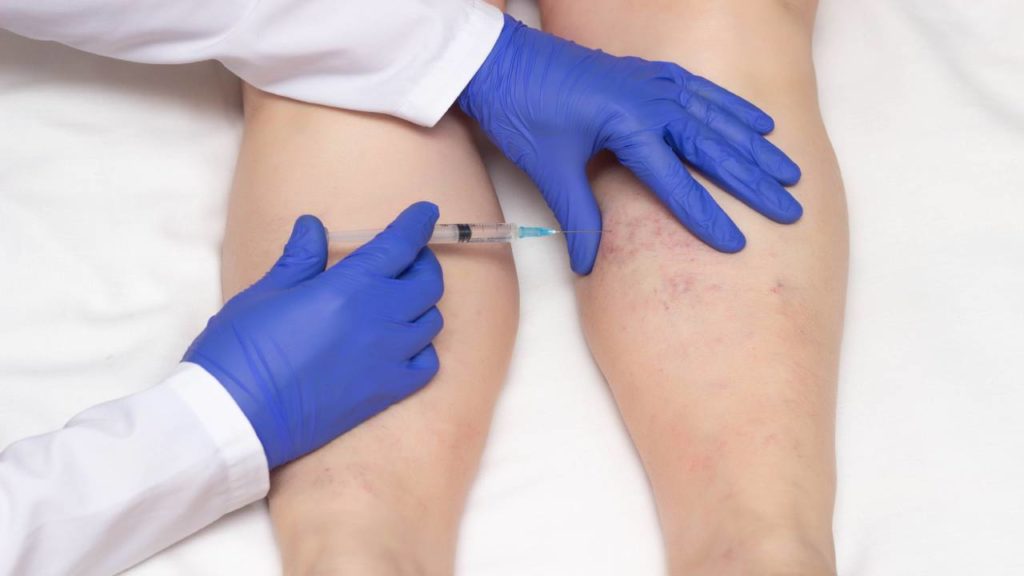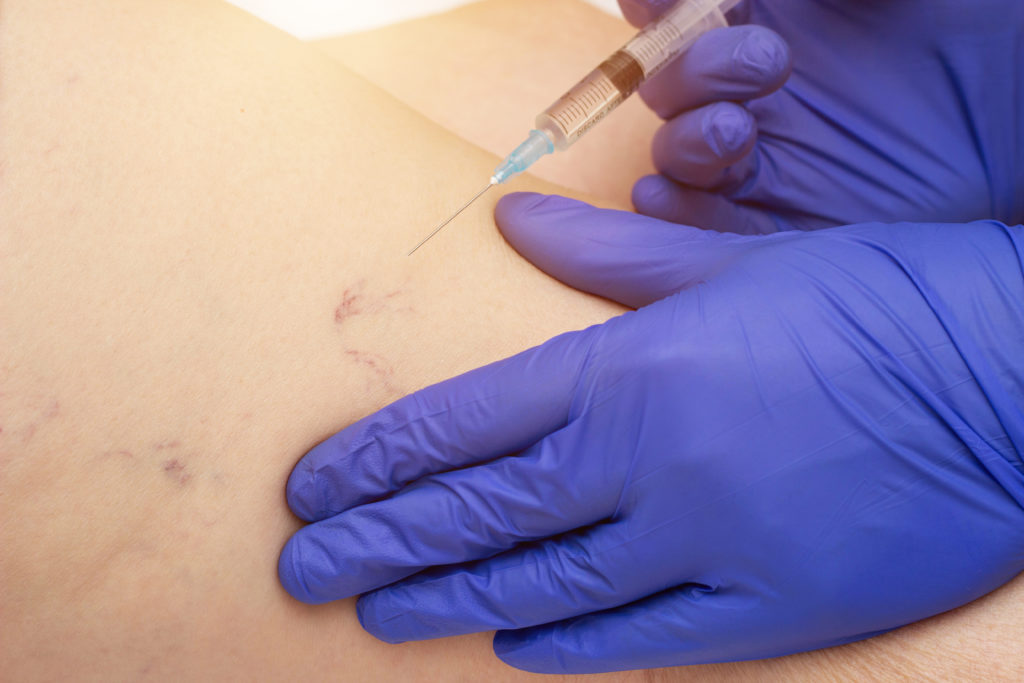Table of Contents
Many women (and some men) see varicose veins as their enemy. Not only are they visually unappealing, but they can also cause pain, discomfort, and other serious complications when left untreated. It can also cause women to be uncomfortable showing off their legs and hips, especially when they wear skirts, shorts, or swimsuits outside, where many people can see them.
Back then, the treatment options available for treating varicose veins included surgical methods. These methods have frightened people because they have to go under the knife, sustain wounds, and rest for more extended periods for recovery purposes. It can be a hassle, especially for those who cannot afford to be absent from work for many days.
Thankfully, we have cosmetic methods addressing varicose veins that are less invasive compared to the traditional methods. One of them is laser ablation therapy. This revolutionary procedure allows you to lose those varicose veins without opening your legs and undergoing surgery altogether. Many people have obviously favored this treatment, with many satisfied with the results.
Without further ado, here is what endovenous laser ablation therapy is and what it can do to you.
Endovenous Laser Ablation at a Glance
Laser ablation therapy is a minimally invasive endovascular procedure for the treatment of vein disease. It works by destroying unwanted veins with high-intensity pulses of light or laser energy. Laser ablation therapy has been used successfully to treat varicose veins, spider veins, and other types of incompetent veins that are commonly associated with chronic venous insufficiency (CVI).
During endovenous laser ablation, endovenous thermal energy is introduced into the endovenous vein employing optical fibers. An optical fiber is a flexible strand made up of many small bundles of glass fibers that bend easily.
The endovenous heat energy causes collagen denaturation in the interior wall layer, which leads to endovenous occlusion and endofibrosis. Endofibrosis is the end stage of endovenous thermal denaturation, which results in a collagen scar tissue reaction.
Laser ablation therapy is performed with local anesthesia, endovenous heparin anticoagulation, and mild sedation. The procedure typically lasts from 30 minutes to one hour, depending on how many veins are treated. It usually takes about six weeks for patients to recover after endovenous laser ablation surgery. Success rates are high, with no significant complications occurring during or after the procedure itself.
Endovenous laser ablation has been used successfully on long segments of peripheral saphenous vein up to 20 cm) as well as the small saphenous vein (less than 3 cm).
The endovenous laser ablation is a new technique in the endoluminal treatment of venous disease with promising results. The endovenous laser ablation procedure provides a minimally invasive, safe, and effective endovascular treatment for refluxing or incompetent veins. In the future, endovenous thermal energy may be used to treat other conditions such as varicose vein disease, endometriosis, and endobronchial intubation.
Benefits of Endovenous Laser Ablation
The benefits of endovenous laser ablation are that the procedure is minimally invasive. It can be performed in areas where surgery would not usually be used. It does not require an incision, and the disadvantages are short recovery time.
Other known benefits of endovenous laser ablation include:
- Reduces postoperative discomfort
- Decreases recovery time
- Removes more varicose veins than conventional surgery
- Targets diseased cells while leaving healthy cells intact
- Intermittent swelling, bruising, and pain at injection site expected
- Minimally invasive endovascular procedure for the treatment of vein disease
- Works by destroying unwanted veins with high-intensity pulses of light, or laser energy
- High success rates with minor complications after treatment
- Short recovery time compared to conventional surgery
Treated long segments up to 20 cm (8 inches) and small veins less than 3 cm (1 inch) in length.
Endovenous Thermal Energy from Laser Ablation Therapy is a promising endoluminal treatment option for venous disease with minimal risk of adverse events. Higher success rates have been reported by users compared to traditional surgery practices. Advancements in laser technology will continue to improve clinical outcomes for patients worldwide.
There are endovenous laser ablation therapy centers located all across the United States, Canada, and Europe. Endovenous laser ablation can be expensive, about $2-3k per leg/treatment session. Insurance companies may cover endovenous laser ablation total costs if they are deemed medically necessary or covered procedures under your specific individual policy.
Necessary Precautions Before the Treatment
Some precautions have to be taken into consideration before endovenous laser ablation surgery. Patients must not have heart-valve replacements, diabetes mellitus, or autoimmune conditions, and they cannot be smokers or obese. Additionally, patients should avoid aspirin for several weeks before endovenous laser ablation, as well as antiplatelet drugs such as Plavix, unless otherwise explicitly instructed by their physician.
Endovenous Laser Treatment may not be the best course of treatment for all patients with vein disease. Some conditions are better treated through endovenous thermal energy from laser ablation therapy, endovascular surgery, or traditional open surgery.
Patients must avoid aspirin or other antiplatelet drugs two weeks before treatment to minimize the risk of bleeding during endovenous laser ablation. Good medical history is also required, and the patient can lie still during the endovenous laser ablation procedure.
For most cases, endovenous laser ablation is performed outpatient under sedation or just local anesthesia. The most common side effect after endovenous laser ablation is swelling and pain at the injection site, usually for 3-5 days. Patients are advised to immediately report any severe pain or signs of skin damage at the endovenous laser ablation site to their physician.
Final Thoughts
It can be very frustrating to see varicose veins poking out of your legs and hips. As time goes by, it can be painful and might cause discomfort, especially if you are a woman who frequently wears heeled shoes as part of your office fashion.
Of course, we will never tell you to stop wearing heeled shoes as it gives you power and motivation to be the next corporate conqueror with your get-up. What we want to recommend is to get rid of your varicose veins without undergoing surgery.
Fortunately, endovenous laser ablation therapy is now available, which provides a less painful way of getting rid of your pesky varicose veins. Now, you can enjoy not seeing your varicose veins in the mirror. You will be more confident walking because it is no longer painful, thanks to endovenous laser ablation.
However, you should check with your doctor if you are qualified to undergo this cosmetic procedure because it can be ineffective or incompatible with people with certain medical conditions. Always consult a healthcare provider before booking an appointment to avoid getting disappointed because you cannot get it anyway.
OC Cosmetic and Vein Center prioritizes your needs in getting rid of annoying varicose veins and other imperfections and flaws present in your body right now. There is no need for you to worry if they are legitimate. They are certified to offer cosmetic treatments and other services that can help you with your varicose veins.
Endovenous laser ablation is one popular treatment, along with the other services, all to make you look good and feel good from head to toe.




